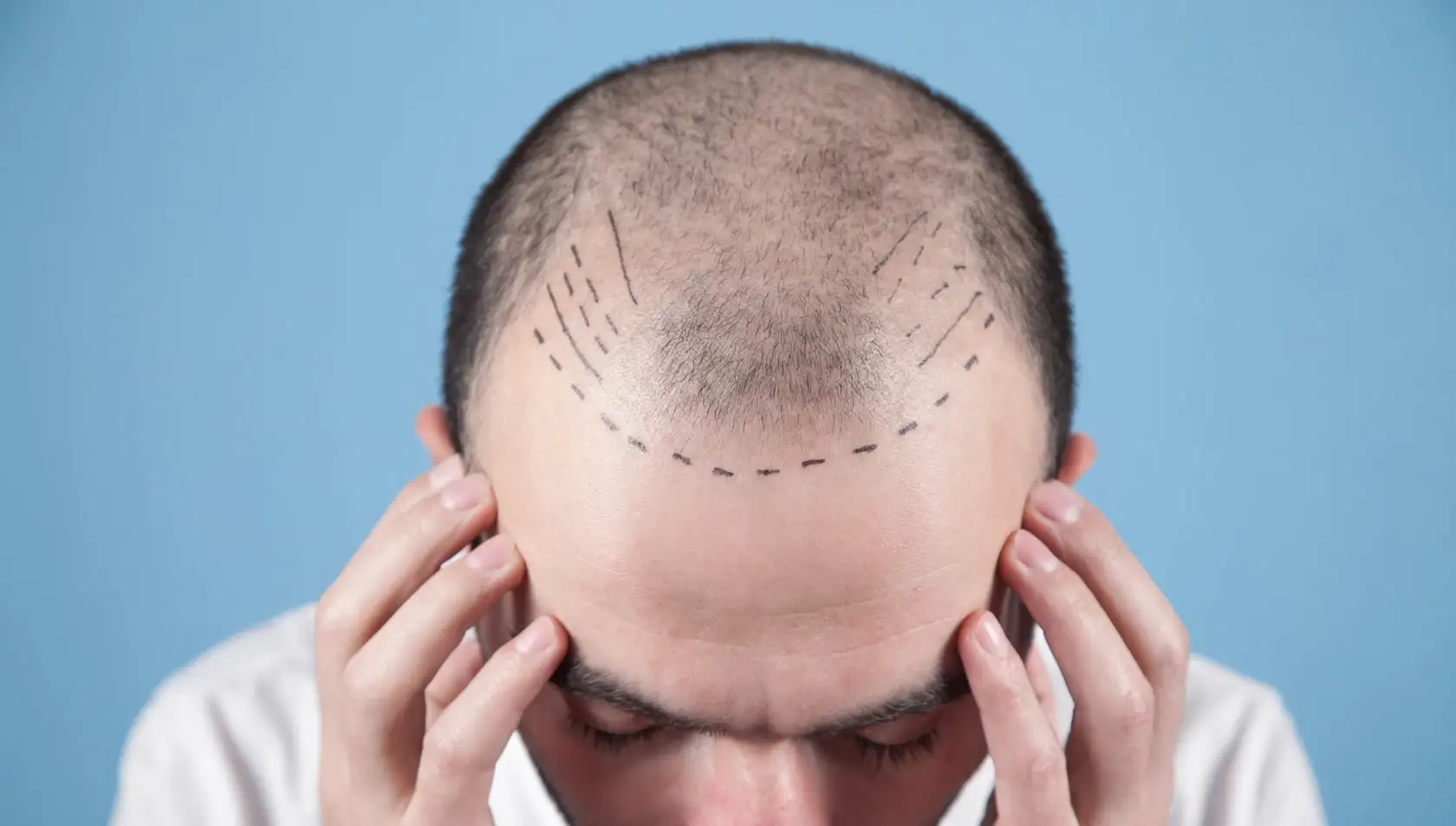Embarking on a journey for hair restoration is a significant decision, often culminating in a hair transplant procedure. For individuals considering this life-changing treatment, understanding the hair transplant recovery timeline is paramount. This detailed guide aims to demystify the post-operative period, providing clear, authoritative insights into what patients can expect from the moment they leave the operating room through the crucial months of healing and growth. From the initial days of delicate graft care to the emergence of new, healthy hair, we will navigate each stage, ensuring you are well-informed and prepared for every step of your recovery journey. This comprehensive overview is designed to empower patients with knowledge, fostering realistic expectations and promoting optimal outcomes for successful hair restoration.
Table of Contents
The Immediate Aftermath: Days 1-7
The initial week following a hair transplant is critical for graft survival and establishing the foundation for successful growth. Immediately after the procedure, patients will notice small scabs forming around each transplanted follicular unit and some redness in both the donor and recipient areas. Mild swelling, particularly around the forehead and eyes, is also common and typically peaks on day 3 or 4 before gradually subsiding.
During this phase, meticulous care is essential. Patients are typically advised to keep their head elevated, especially while sleeping, to minimize swelling. Special saline sprays are often provided to keep the grafts moist, preventing them from drying out. The first wash, usually performed by the clinic or under their direct guidance 24-48 hours post-op, is a gentle process designed to clean the area without disturbing the delicate grafts. Patients are taught how to carefully spray and lightly rinse the scalp, avoiding any rubbing or scratching.
Pain is generally minimal and manageable with over-the-counter pain relievers, though some tightness or discomfort in the donor area may be experienced. It is crucial to strictly avoid touching, picking, or scratching the transplanted area. Alcohol, strenuous exercise, and direct sun exposure are also to be avoided to facilitate optimal healing.
The Healing Progression: Weeks 2-4
As you transition into the second to fourth weeks, the scabs from the transplanted area will begin to naturally shed. This process is vital, as the scabs contain dried blood and tissue that formed around the grafts. Gentle washing, as instructed by your clinic, will aid in their removal. It is imperative not to forcibly pick at these scabs, as doing so could dislodge the newly transplanted grafts.
By the end of the second week, most of the initial redness and swelling should have significantly reduced. The donor area will also show considerable improvement, with hair growing back to cover any shaved areas if FUE was performed. Some patients might experience a slight itching sensation as the scalp heals, which can be managed with approved topical solutions or light tapping, never scratching.
One of the most anticipated, yet often misunderstood, phases occurs during this period: ‘shock loss’. It is entirely normal for the newly transplanted hairs, and sometimes even some existing native hairs, to fall out. This is a temporary phenomenon, a physiological response to the trauma of the transplant procedure, and it makes way for new, permanent hair growth. This shedding indicates that the hair follicles have entered their resting (telogen) phase and are preparing to enter the growth (anagen) phase. Understanding this natural part of the hair transplant in Turkey recovery process is key to maintaining peace of mind.
Growth and Maturation: Months 2-6
The period from month two to month six marks the beginning of true growth. After the shock loss phase, the transplanted follicles will start to produce new hair. Initially, these hairs may be fine and thin, often described as ‘peach fuzz’, but they will gradually thicken and mature over time. Growth is often uneven, with some areas showing progress faster than others. Patience is a virtue during this stage, as visible results are still emerging.
Many patients will observe significant changes around month four, with more noticeable hair emerging. The rate of hair growth is approximately 1 cm (0.4 inches) per month, so by month six, you can expect to see several centimeters of new hair. The texture and color of the new hair will also begin to normalize, aligning with your existing hair.
During this time, it’s generally safe to resume most normal activities, including light exercise and more vigorous shampooing. However, it’s still advisable to protect your scalp from harsh direct sunlight. Continued adherence to any post-operative medication or topical treatments recommended by your surgeon is also important to support healthy growth.
Scientific understanding of wound healing in FUE procedures emphasizes the importance of a sterile environment and gentle handling of grafts. Research, such as reviews on post-operative care protocols in hair transplantation, consistently highlight that proper hydration of grafts during the initial hours, meticulous cleaning of the recipient area, and patient adherence to aftercare instructions are paramount for optimizing graft survival and minimizing complications like folliculitis. These practices directly contribute to a smoother healing progression and the eventual success of the transplant.
The Long-Term Outcome: Months 7-18 and Beyond
The full results of a hair transplant typically become apparent between 12 to 18 months post-procedure. By month seven, a substantial amount of new hair will have grown in, and you will begin to appreciate the density and coverage achieved. The hair will continue to thicken and integrate seamlessly with your natural hair.
Around the 12-month mark, approximately 80-90% of the final result will be visible. The hair will be mature, and you should be able to style it normally. Any minor variations in density or texture will typically resolve as the hair continues to mature. For some individuals, particularly those with slower growth cycles, the final refinements might extend to 18 months.
At this stage, regular hair care routines can be fully resumed. The transplanted hair is permanent and behaves like the hair from the donor area, meaning it will continue to grow naturally. Ongoing consultation with your clinic may be beneficial to assess the final outcome and discuss any further cosmetic refinements or maintenance, if necessary. For those considering the optimal season for their medical journey, exploring resources like the Antalya Climate: Optimal Seasons for Medical Travel can be valuable, particularly for post-operative comfort.
CK Health Turkey: Your Partner in Hair Restoration
At CK Health Turkey, we understand the profound impact that hair loss can have on an individual’s confidence and self-esteem. As a leading provider of medical services, including state-of-the-art hair transplant procedures, we are dedicated to offering international patients, particularly those from the UK, an unparalleled standard of care. Our clinics boast experienced surgeons, cutting-edge technology, and a commitment to achieving natural-looking, lasting results.
We specialize in comprehensive hair restoration solutions, guiding you through every step of the process, from initial consultation to the detailed post-operative care crucial for the optimal hair transplant recovery timeline. Our tailored packages include not only the surgical procedure but also accommodation, transfers, and dedicated patient support, ensuring a seamless and stress-free experience. We pride ourselves on transparent pricing and delivering exceptional value without compromising on quality.
Choosing CK Health Turkey means entrusting your hair restoration to a team that prioritizes your safety, comfort, and satisfaction. We believe in empowering our patients with knowledge and support, ensuring they feel confident and cared for throughout their journey. Discover why countless international patients choose us for their plastic surgery in Turkey needs, including world-class hair transplants. To learn more about how we can help you achieve your hair restoration goals, we invite you to get in touch for a personalized consultation or visit our website for further information.
Hair Transplant Cost Comparison: Turkey vs. United Kingdom
Opting for a hair transplant in Turkey often presents a significant financial advantage without compromising on the quality of care. The lower operational costs and favorable exchange rates contribute to more accessible pricing for international patients, including those from the United Kingdom. Below is a general comparison of typical costs for popular hair restoration services.
| Service/Item | Turkey Price (GBP) | United Kingdom Price (GBP) |
|---|---|---|
| FUE Hair Transplant (1500-2500 grafts) | £2,000 – £3,500 | £4,000 – £8,000 |
| FUE Hair Transplant (2500-4000 grafts) | £3,000 – £5,000 | £7,000 – £12,000 |
| DHI Hair Transplant (up to 2500 grafts) | £2,500 – £4,000 | £5,000 – £9,000 |
| PRP Therapy (Adjunctive) | £150 – £300 per session | £300 – £600 per session |
| Post-Operative Care Package | Included / £100 – £250 | Often separate / £200 – £500 |
*Note: Prices are estimates and can vary based on clinic, surgeon experience, number of grafts, and specific package inclusions.*
Hair Transplant Journey: Turkey vs. United Kingdom Comparison
Understanding the distinct advantages of undergoing a hair transplant in Turkey compared to the United Kingdom can help patients make an informed decision. While both offer quality medical care, several factors differentiate the overall experience and value proposition.
| Factor | Turkey Experience | United Kingdom Experience |
|---|---|---|
| Cost-Effectiveness | Significantly lower prices due to economic factors and high volume. | Higher prices reflecting higher operational costs and wages. |
| Availability/Waiting Times | Generally short to no waiting lists, immediate scheduling possible. | Potentially longer waiting lists, especially for reputable clinics. |
| Package Inclusions | Often comprehensive packages including accommodation, transfers, and post-op care. | Typically procedure-only pricing; extras are often separate costs. |
| Surgeon Experience | High volume of procedures leads to extensive surgeon experience and specialization. | Highly skilled surgeons, but possibly fewer specialized clinics solely focused on hair. |
| Medical Tourism Infrastructure | Well-developed infrastructure, catering specifically to international patients. | Primarily serves domestic patients; less integrated medical tourism support. |
| Quality of Facilities | Modern, state-of-the-art clinics with international accreditation. | High-standard clinics, but may vary more widely in specialized focus. |
Ensuring a Smooth Recovery: Expert Tips
Adhering to post-operative instructions is the single most critical factor for a smooth recovery and successful hair transplant outcome. Beyond the timeline, specific actions can greatly enhance your healing process:
Protecting Your Grafts
For the first 10-14 days, your newly transplanted grafts are extremely vulnerable. Avoid any direct friction or impact to the recipient area. This means being mindful when dressing, showering, and sleeping. Use a neck pillow to prevent accidental rubbing against your pillowcase at night.
Washing Your Hair Properly
Your clinic will provide specific instructions and possibly special shampoos for washing. Typically, gentle washing begins a few days after the procedure. The technique involves carefully pouring water over the scalp and applying foam or shampoo without rubbing. This helps in removing scabs and keeping the area clean, preventing infection. Avoid high-pressure showers directly on the grafts.
Managing Swelling and Discomfort
Swelling is a normal part of the process. Applying cold compresses to the forehead (not directly on the grafts) can help. Keeping your head elevated, especially for the first few nights, is also effective. Over-the-counter pain medication as prescribed or recommended can manage any discomfort.
Lifestyle Adjustments
- Smoking and Alcohol: These should be avoided for at least a few weeks post-op as they can impair healing and blood flow to the grafts.
- Exercise: Strenuous activities and heavy lifting should be avoided for at least 2-4 weeks to prevent increased blood pressure in the scalp, which could dislodge grafts or cause bleeding.
- Sun Exposure: Protect your scalp from direct sunlight for several months. Wear a loose-fitting hat when outdoors, but ensure it does not compress the grafts.
- Diet: Maintain a healthy, balanced diet rich in vitamins and minerals to support healing and hair growth.
By following these expert tips, patients can significantly contribute to a more predictable and positive hair transplant recovery timeline, ensuring their investment in hair restoration yields the best possible results.
The journey through a hair transplant recovery timeline is a process demanding patience and diligent adherence to expert guidance. From the delicate initial days of healing and scab formation to the gradual emergence of new, healthy hair, each stage contributes to the final, transformative outcome. By understanding the typical progression, managing expectations, and carefully following post-operative instructions, patients can significantly enhance their results. While the initial weeks require careful attention, the reward of permanent, natural-looking hair growth makes the commitment worthwhile. Choosing a reputable clinic that offers comprehensive support throughout this journey is paramount, ensuring peace of mind and optimal results for your hair restoration aspirations.
FAQs
How long is the full hair transplant recovery timeline?
The full recovery, where final results are visible, typically takes 12 to 18 months. However, the initial healing of the scalp and grafts usually occurs within 2-4 weeks.
When can I wash my hair after a hair transplant?
The first wash is usually performed 24-48 hours after the procedure, either by the clinic or under their strict guidance. Regular gentle washing usually begins after a few days, following specific instructions.
Is shock loss normal after a hair transplant?
Yes, shock loss is a completely normal and expected part of the recovery process. It usually occurs between weeks 2-8 as the transplanted hairs shed before new, permanent hair begins to grow.
How long until I see new hair growth?
New hair growth typically begins around 3-4 months post-procedure. Initially, the hairs may be fine, gradually thickening and becoming more noticeable over the subsequent months.
Can I wear a hat after a hair transplant?
A loose-fitting hat can be worn after the first few days, once the initial sensitivity has decreased, to protect the grafts from sun and dust. Avoid tight hats that could rub or compress the transplanted area for at least 2-3 weeks.
When can I resume exercise after a hair transplant?
Light exercise can usually be resumed after 7-10 days, but strenuous activities, heavy lifting, and contact sports should be avoided for at least 2-4 weeks to prevent dislodging grafts or increasing swelling.
What is the difference between FUE and DHI recovery?
The initial recovery timelines for FUE (Follicular Unit Extraction) and DHI (Direct Hair Implantation) are very similar, with delicate graft care for the first week. DHI might have slightly less trauma to the scalp as it doesn’t require pre-made incisions, potentially leading to marginally quicker initial healing in some cases, but the overall growth timeline remains consistent.
Are hair transplant results permanent?
Yes, the transplanted hair follicles are typically taken from areas of the scalp resistant to balding (e.g., the back and sides), making the results permanent. These hairs will continue to grow naturally for life.
How can I minimize swelling after the procedure?
To minimize swelling, keep your head elevated, especially when sleeping, for the first few nights. Apply cold compresses to the forehead (avoiding the grafts), and follow any anti-inflammatory medication instructions from your surgeon.
What should I avoid during the hair transplant recovery?
Avoid touching or scratching the transplanted area, strenuous exercise, direct sun exposure, smoking, alcohol, and any tight headwear for the initial crucial weeks to ensure optimal graft survival and healing.






